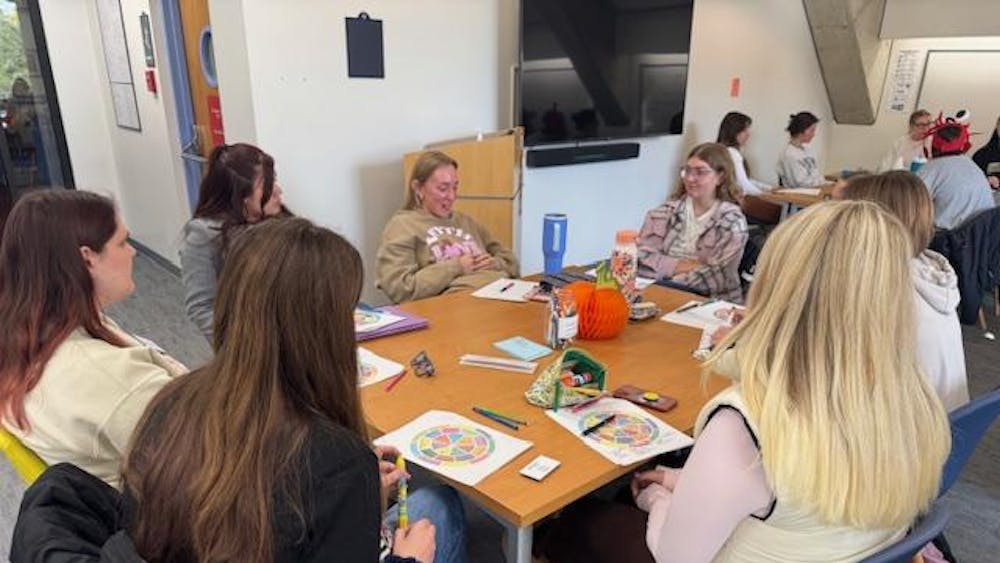St. Patrick’s Day carries many different meanings. For the Irish, it is the Catholic feast day of Ireland’s patron saint and a day for honoring Irish heritage. For Irish-Americans, St. Patrick’s Day has become a celebration of Irish-American identity. And at Notre Dame — a school with the Irish leprechaun as a mascot — St. Patrick's Day holds special significance, although spring break sometimes keeps students off campus on the holiday.
Deborah Rotman, an anthropology professor and director of Notre Dame’s Center for Undergraduate Scholarly Engagement (CUSE), has conducted research on the Irish-immigrant experience in the U.S. and in South Bend.
“The history of Notre Dame and St. Patrick’s Day actually goes back to our founding as an institution,” Rotman said.
Although Fr. Edward Sorin was French, four of the seven monks who founded the University were Irishmen. In the midst of building the Notre Dame campus in 1842, Sorin had to address growing anti-immigrant sentiment toward Irish immigrants in the South Bend community. As a result, Rotman said Sorin made a point to integrate the Irish into the Notre Dame Catholic community. He established Sorinsville, a residential neighborhood around campus where the Irish-Catholic immigrants would reside together. Although Rotman said this strategy separated the immigrants from the community, she said Sorin wanted to help the immigrants integrate.
“Sorinsville may seem like a form of residential segregation, but Fr. Sorin’s intent was to stabilize the workforce for the University and help these immigrants create new lives for themselves in South Bend,” she said.
Despite his work with the Irish, Sorin banned the celebration of St. Patrick’s Day at Notre Dame, a decision that was justified for security reasons, Rotman said.
“Most people do not know that Sorin’s decision to forbid celebration on St. Patrick’s Day was grounded in his belief that the anti-immigrant sentiment of the time was a public-safety issue,” she said. “In other words, Sorin was not trying to scorn the Irish or evade a day of festivities; he was really just trying to to protect the Notre Dame community from potential social conflict.”
By the time of Sorin’s death, Rotman said the negative sentiment toward Irish-Catholics “shifted” to other immigrant groups, and Americans began to embrace the Irish much more. As a result, St. Patrick’s Day at Notre Dame involved a variety of activities. Every year, a Mass commemorated the feast of St. Patrick, the band played Irish sacred music in front of the Dome and students recited Irish poems to one another for entertainment. Classes were cancelled for University-wide concerts, banquets, football games, plays and parades.
By the early 2000s, Notre Dame students had established a variety of festive traditions for St. Patrick’s Day. Some students attended the feast day Mass which features Notre Dame Folk Choir’s collection of Irish sacred music. Students dressed for class in green garb and make-shift “bands” paraded through academic buildings playing the bagpipes. Many of the dorms on campus hosted cookouts or gave out Irish paraphernalia, and the dining halls offered Irish cuisine in the form of potato dishes and cabbage.
This year marked another year of a spring break St. Patrick’s Day. In fact, there have only been a handful of years in which St. Patrick’s Day has actually taken place when students were on-campus. Rotman dispelled the notion that the administration manipulates the dates of spring break to prevent a rowdy, on-campus celebration of the holiday. She noted that by rule spring break must begin the Saturday after the 39th class day.
“I do not believe the administration purposely schedules spring break to avoid St. Patrick’s Day,” Rotman said. “I think the scheduling ultimately comes down to the timing of Christmas and Easter break, and they have to follow the registrar’s spring semester calendar rules, too.”
Read More
Trending









